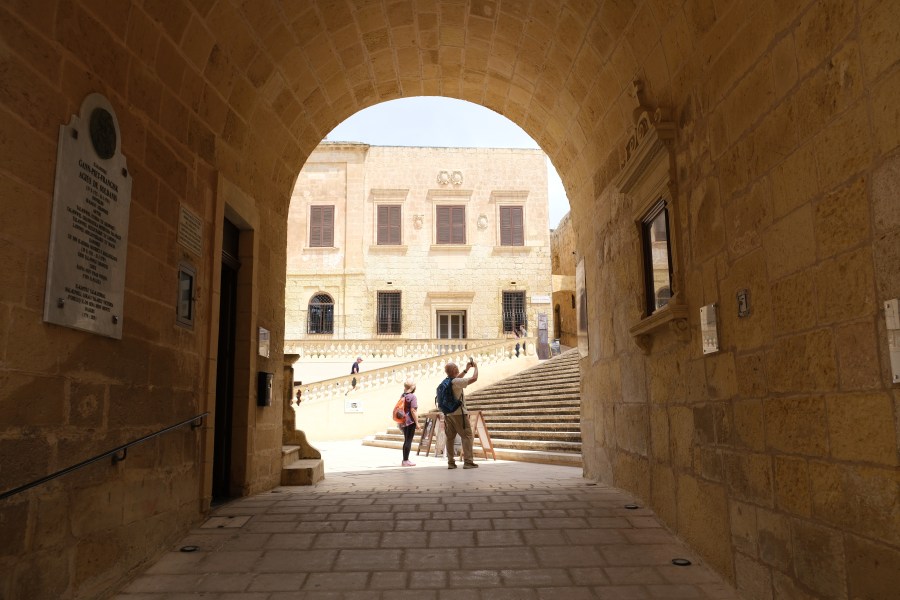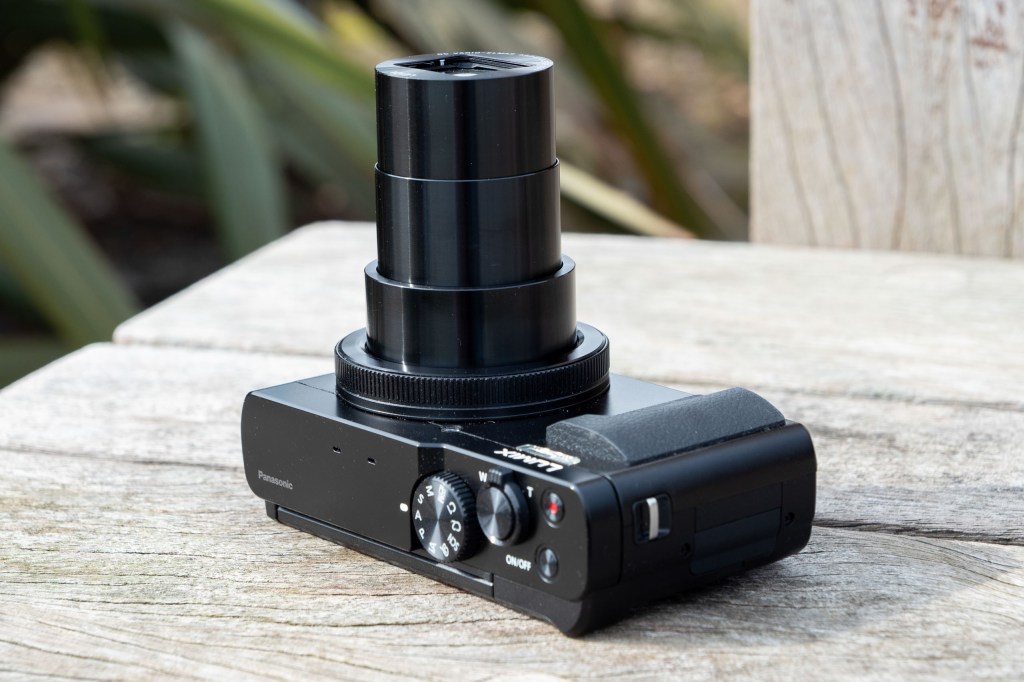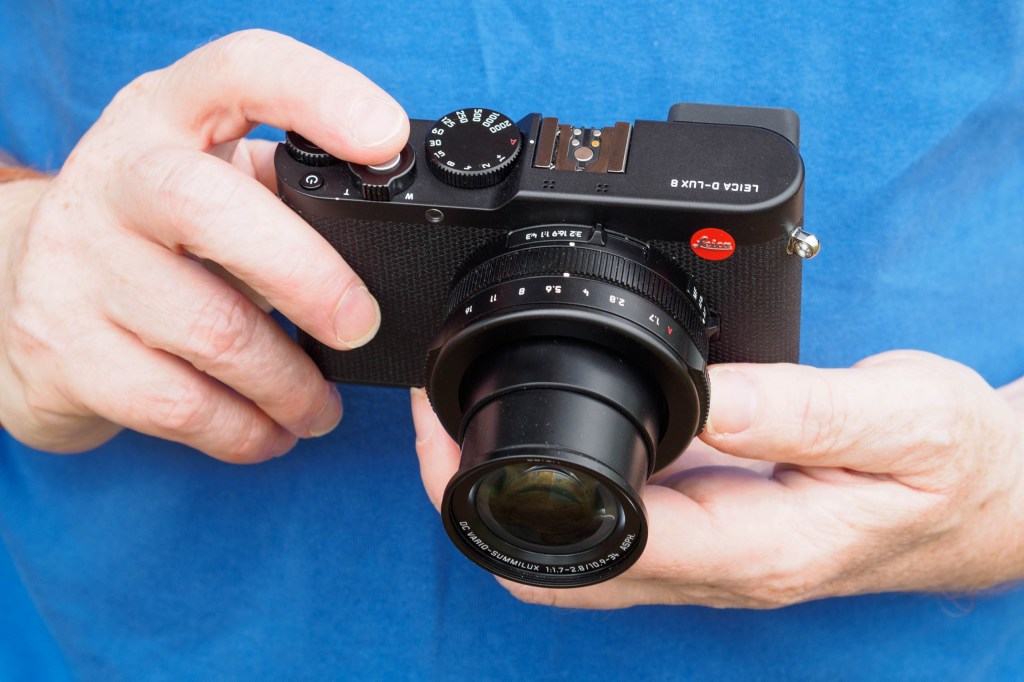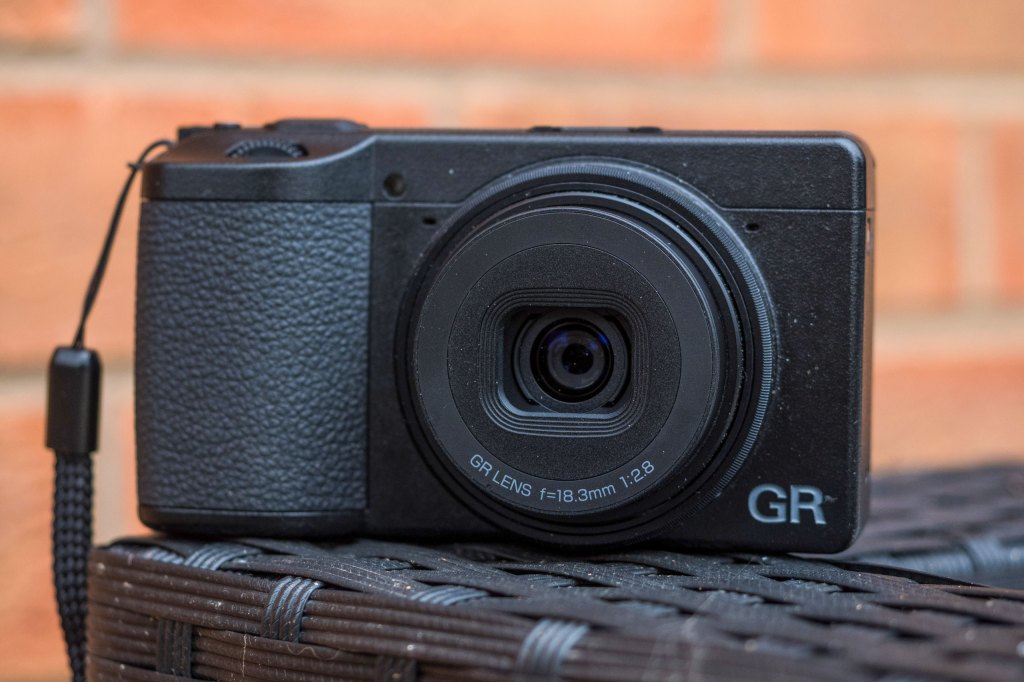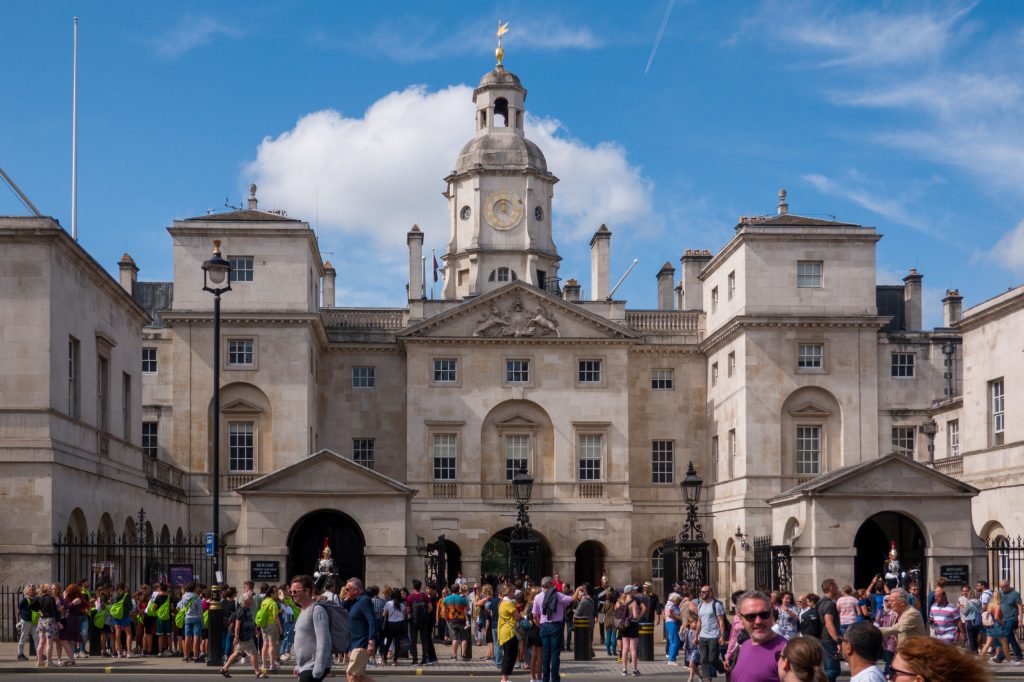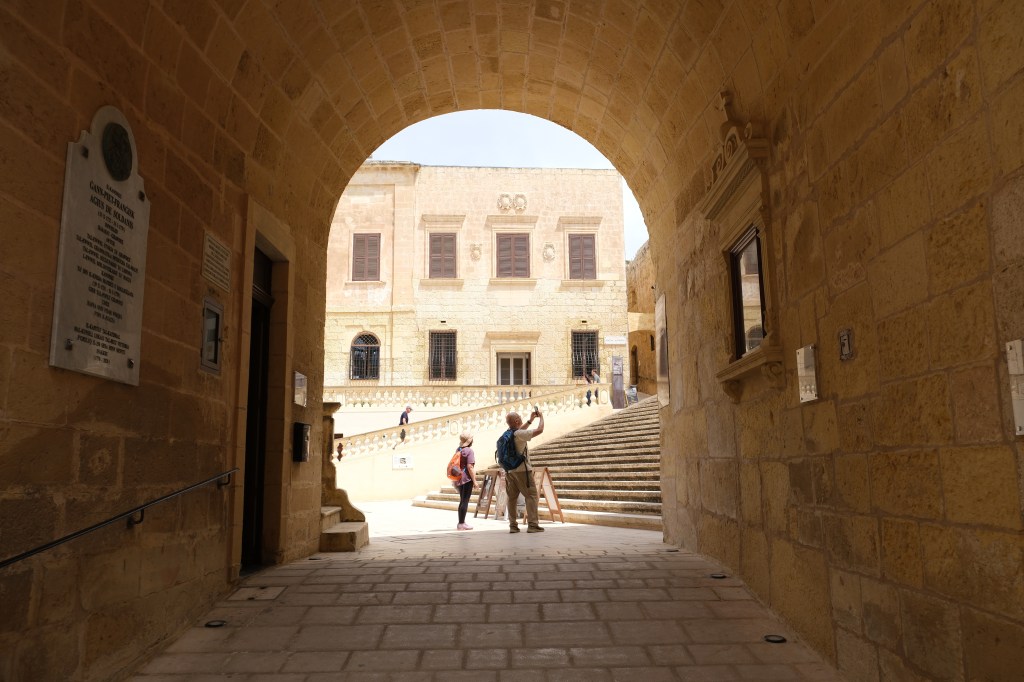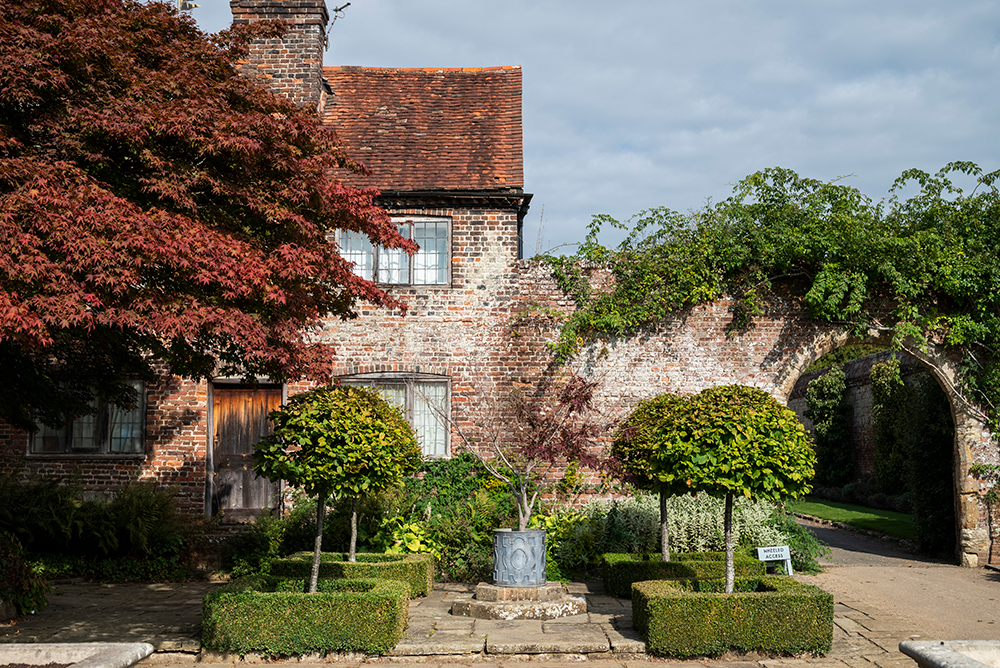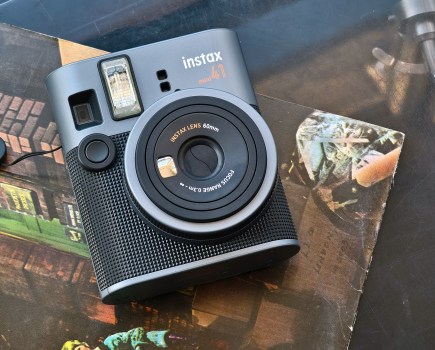The best travel camera for you could be any one of a number of different models, depending on what you want to capture. ‘Travel’ is a broad term, after all, and can encompass city breaks, beach holidays, backpacking, ski trips and more. However, it’s very likely that you’re going to want a small, light, self-contained camera that takes significantly better images than your phone – and that’s what I’ve focused on here,
Having been using, testing and reviewing cameras for many years, and covering all the latest releases, the travel camera I will recommend to most people is the Fujifilm X-E5, which sits at the top spot on my list. I think this mirrorless model provides the perfect balance between portability, image quality, versatility and price. But there are lots more options that could also suit you, especially more specialised cameras like waterproof compacts and action cameras, so I’ve filled out my list to try and cover every niche (and every budget).
Travel demands economic planning; not just in what we spend, but in what we take with us. A camera for travel therefore needs to justify its impact on both budget and space. This is quite a fine line, so I’ve picked cameras that provide just this kind of value – a genuinely great shooting experience, without breaking the bank. Every camera on here has one thing in common – it impressed our reviewing team enough to earn their recommendation. And we’ve plenty of advice for taking better travel images with them.
The best cameras for travel: our quick list
- Best travel camera overall: Fujifilm X-E5 – Buy now
- Best waterproof travel camera: OM-System Tough TG-7 – Buy now
- Best travel camera with a zoom: Panasonic ZS99 / TZ99 – Buy now
- Best premium travel camera: Leica D-Lux 8 – Buy now
- Best travel compact with ND filter: Ricoh GR IV – Buy now
- Best action camera for travel: GoPro Hero 13 Black – Buy now
- Best small travel camera: Sony RX100 VIIA – Buy now
- Best bridge camera for travel: Panasonic Lumix FZ82D – Buy now
- Best DSLR for travel: Nikon D5600 – Buy now (used)
- Best travel camera for video: Fujifilm X-S20 – Buy now
- Best weather-sealed travel camera: Olympus OM-System OM-5 II – Buy now
- Best full-frame travel camera: Nikon Z5 – Buy now
Looking for the best deal on cameras for travel? Not only will you find the best travel cameras, but also some of the best deals, as our ‘Buy now’ buttons are setup to automatically take you to the best prices from trusted retailers. You’ll also find a list of other retailers below each camera, so you can find the right deal for you.
Why you can trust Amateur Photographer
We spend many hours testing every product we recommend, in detail, in a variety of situations and shooting scenarios, and only use experts for our reviews, so you can be sure that you’re getting the best products. Find out more about our expert writers.
The best travel cameras and vacation cameras: our full list
Best overall
Best travel camera overall: Fujifilm X-E5

Amateur Photographer verdict
Combining the smooth shooting experience of a premium compact with the flexibility of interchangeable lenses, the Fujifilm X-E5 is a joy of a camera, and the best you can get for travel photography.- Small body, but with enthusiast-friendly design
- Engaging analogue controls
- Peerless in-camera colour processing
- Excellent raw image quality
- Fairly small viewfinder
- No weather-sealing
- Screen only tilts up and down
At a glance:
| Price: | $1699 / £1299 body-only |
| ISO: | ISO 125-12,800 (standard) |
| Sensor: | 40.2MP APS-C X-Trans sensor |
| Burst: | Up to 13fps shooting |
| Video: | 6.2K 30p, 4K 60p, and Full HD 240p video |
| Viewfinder: | 2.36m-dot, 0.62x viewfinder |
| Screen: | 3in, 1.04m-dot tilting touchscreen |
| Stabilisation: | In-body image stabilisation – 7 stops |
Fujifilm cameras have a lot of features that appeal specifically to travel photographers. Their slimline dimensions, attractive designs and dial-led controls make them enjoyable cameras to own, to hold and to use – the Fujifilm shooting experience is one of the best in all photography. And they’ve got it where it counts when it comes to imaging too, producing brilliant images straight out of camera thanks to Fuji’s hugely popular Film Simulations, which emulate the look of classic film stocks. If you want to produce dynamic and exciting travel photography without having to spend tons of time in editing, Fujifilm is the right choice.
So, why the X-E5? Put simply, this camera takes everything that’s great about Fuji and wraps it up in a single package. It handles a lot like the phenomenally popular X100VI compact, only it doesn’t restrict you to just one lens, allowing you to chop and change X-mount glass. This is hugely beneficial for travel, where you’re likely to encounter very different shooting situations depending on your location. The X-E5 hold its ground whether shooting the sun-soaked streets of Valencia or the Tower Bridge in London.
It also borrows the Film Simulation dial that was introduced on the X-T50, allowing you to quickly chop and change from standard Provia to warm Velvia to black and Acros and back again. This is a great way to stay in the moment while you’re shooting – which is a big part of travel photography. Also, if you’re someone who likes to customise the look of their images, the X-E5 makes it easy to tinker with these Film Simulation modes and create your own ‘recipes’, saving and storing them for future use.
I loved my time with the X-E5. It’s a joy to shoot with and produces brilliant results, punching well above its weight in terms of image quality. I could rescue detail from underexposed shots in post-processing, I could push the ISO up to high sensitivities without severely compromising image quality, and I could lock easily onto practically any subject I wanted thanks to intelligent autofocus. Kit yourself out with your preferred X-mount lenses, and you’ll have a travel photography setup that practically anyone would be envious of.
Read my full Fujifilm X-E5 review for the full picture.

Best waterproof
Best waterproof travel camera: Olympus / OM System Tough TG-7
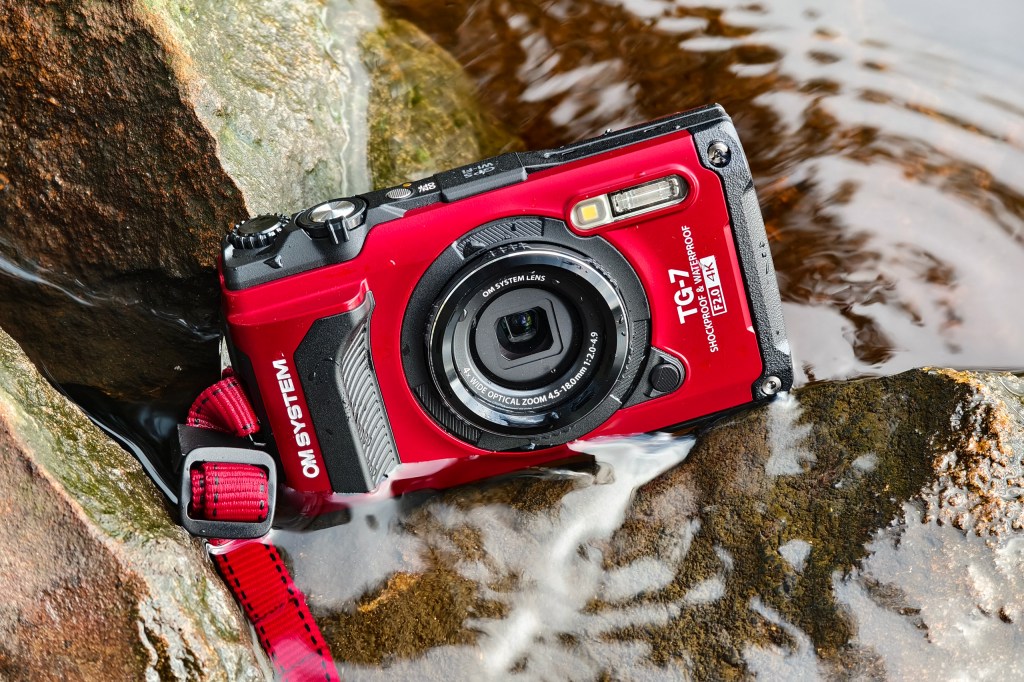
Amateur Photographer verdict
Easy to use, with point-and-shoot operability, but also tough and capable of taking great pictures, the TG-7 is the travel camera I would recommend to most people.- Supremely rugged build
- F2.0 4x optical zoom lens
- GPS, Wi-Fi, Bluetooth built-in
- Impressive macro performance
- Raw shooting available
- Small sensor
- Price increase
At a glance
| Price | $500 / £400 |
| Lens | 4x optical zoom lens, f/2.0-4.9, 24-100mm equivalent |
| Sensor | 12MP 1/2.33inch BSI CMOS |
| ISO | 100-12,800 |
| Video | 4K 30/25fps |
| Screen | 3in, 1.04m-dot |
| Stabilisation | In-body image stabilisation (CMOS shift, up to 2.5stops) |
Waterproof tough cameras tend to be very popular for travel, as they can be used on the beach and in the sea without fear of them getting damaged. For my money, the best waterproof compact you can get is the OM System Tough TG-7, a capable little shooter with a useful zoom lens and the ability to take a beating.
Key to its attraction is its sheer robustness. The TG-7 is waterproof to 15m, shockproof to a drop from 2.1m, freezeproof to -10°C, and crushproof. It also boasts impressive close-up capability and an extensive range of underwater modes, plus an extensive range of lighting and lens accessories. While the sensor is a 1/2.3-inch type, meaning its quality is inferior to other cameras on this list, the TG-7 still dependably produces punchy images, particularly in bright conditions.
For outdoor adventurers, it also includes a suite of environmental sensors that allow you to keep track of your travels, including GPS with a compass, a thermometer and an accelerometer.
Read our full review of the Olympus Tough TG-7.
Take a look at other waterproof and underwater camera options here: Best Waterproof and Underwater Cameras
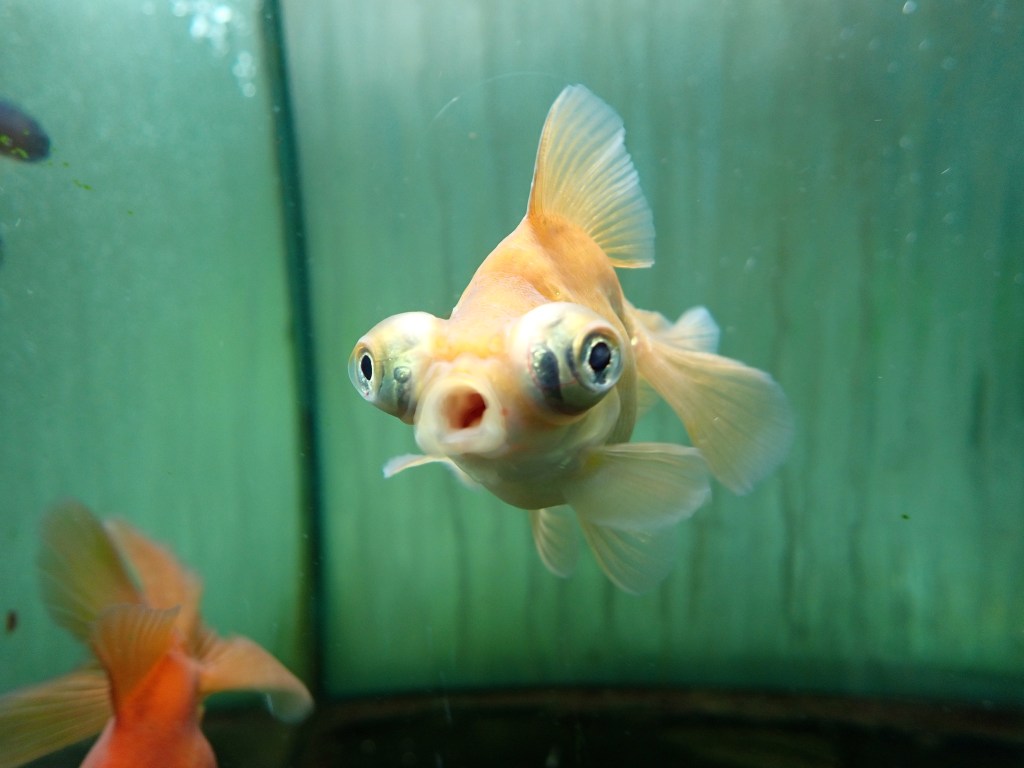
Best zoom
Best travel camera with a zoom: Panasonic Lumix ZS99 / TZ99
Amateur Photographer verdict
If you want a long-zoom compact that will fit in your pocket, then this is a great option. Just be aware that it lacks a viewfinder.- 30x optical zoom
- Front facing touchscreen
- In-camera USB-C charging
- Poor low light performance
- No viewfinder
At a glance:
| Price | $497/£469 |
| Sensor | 20.3MP 1/2.3-inch MOS |
| Lens | 24-720mm f/3.3-6.4 (35mm) equivalent 30x zoom LEICA DC Vario-Elmar |
| Charging | USB-C in-camera |
| Screen | 3-inch, 1840k-dot, touch-sensitive TFT LCD |
There are many benefits to having a long zoom lens for travel – for sheer shooting versatility, a superzoom compact may well be the way to go. The ZS99 / TZ99 is a very versatile pocket-sized superzoom, with a lens that provides an impressive 30x optical zoom (that’s equivalent to 24-720mm), meaning you’re covered for a broad spectrum of shooting scenarios, from wide landscapes and street scenes to fine details and distant monuments.
The Lumix TZ99 doesn’t have a viewfinder; instead, you need to compose using the 3-inch TFT LCD touchscreen. This screen is a good size and is reasonably bright, but in very sunny conditions you might struggle to see it properly. Otherwise, the camera handles nicely with its rubber grip on the front and relatively small size. It’s the kind of camera that delivers great quality under optimal conditions, but that smaller sensor means it can struggle to hold onto detail when the light gets low, as our reviewer discovered in testing. However, I do appreciate that it’s possible to get shallow depth of field with the telephoto lens and relatively wide aperture, as this puts portrait-style images in play.
You can record video at 4K 30fps for up to 90 minutes and use the camera for vlogging thanks to the front-facing articulating screen. With the 4K photo option, you can pull stills from a video footage; this is particularly useful for fast-moving subjects like pets and children.
Read our full review of the Panasonic Lumix ZS99 / TZ99.
Best premium
Best premium camera for travel: Leica D-Lux 8
Amateur Photographer verdict
Traditional control dials, and a multi aspect ratio sensor make the D-Lux 8 a joy to use and create with. Its JPEGs can be dull; best results are obtained from raw.- Large aperture zoom lens
- Engaging manual controls
- Much improved viewfinder over D-Lux 7
- Unique multi-aspect ratio sensor
- Minimal handgrip
- Fixed, instead of tilting rear screen
- Uninspiring JPEG colour
At a glance:
| Price: | $1,595 / £1,450 |
| Lens: | 24-75mm equivalent f/1.7-2.8 lens with OIS |
| Sensor: | 17MP Four Thirds multi aspect-ratio sensor |
| ISO: | 100-25,000 |
| Burst: | Up to 11fps |
| Viewfinder: | 2.36m-dot, 0.74x OLED |
| Screen: | 3in, 1.84m-dot LCD touchscreen |
If you’ve got a bit more budget to spend, I can definitely recommend the Leica D-Lux 8, a compact sporting a zoom lens that provides a good level of compositional flexibility. When I reviewed it, I loved having the ability to change aspect ratios via a switch on the lens. It isn’t described as weatherproof, but I used it in a couple of light showers.
Leica have employed a smaller Four Thirds type sensor with a clever multi-aspect ratio design, which means you can easily create images in different proportions and sizes – useful for sharing on different platforms. This is joined by a 24-75mm equivalent zoom with a bright f/1.7-2.8 aperture. It has traditional photographer-friendly controls for the main exposure settings, and a corner-mounted viewfinder in a flat-bodied ‘rangefinder-style’ design – these make it a joyous thing to use.
Continuous shooting is available at 11 frames per second, but this comes with focus fixed and in 10-bit raw, which limits post-processing flexibility. Drop the speed to 7fps, and you get live view between frames. At 2fps, the camera offers continuous autofocus and 12-bit raw output. All these options give you loads of real-world flexibility, allowing you to choose between whether you want as much speed as possible, or to sacrifice frames in favour of quality and compositional ease.
Read our Leica D-Lux 8 review for more.
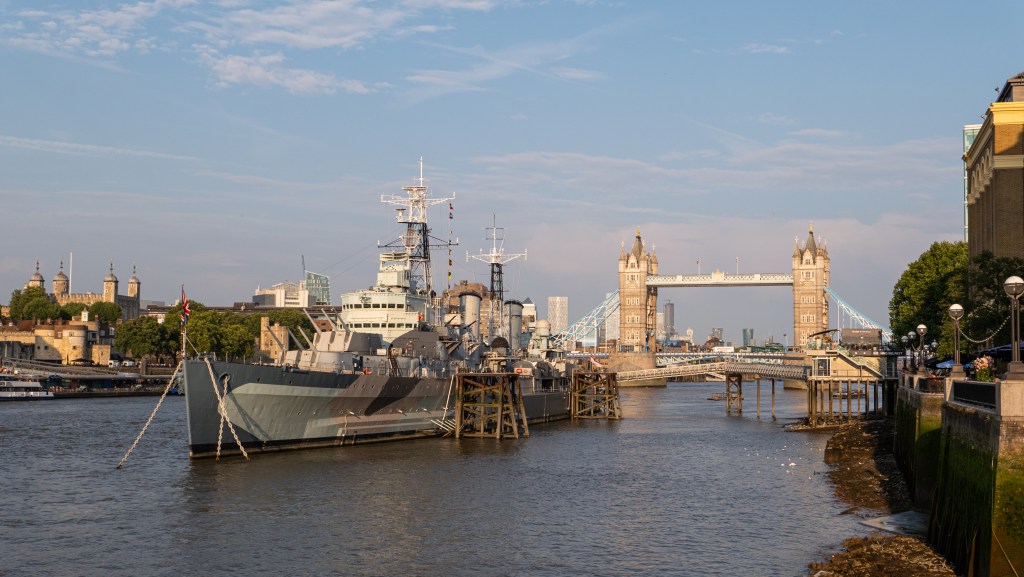
Best compact with ND
Best travel compact with built-in ND filter: Ricoh GR IV
Amateur Photographer verdict
While the Ricoh GR IV may look very much like its predecessor, it’s been substantially upgraded inside. It retains the same street-shooter appeal, though, if you can live with its fixed rear screen.- True pocket-friendly dimensions
- Excellent image quality
- Fast start-up time
- Discreet design
- Fixed LCD and no viewfinder
- Lower resolution than rivals
- Micro SD card storage
At a glance:
| Price: | $1499 / £1199 |
| Lens: | 18.3mm f/2.8 |
| Sensor: | 25.87MP APS-C CMOS, 23.3 x 17.5mm |
| ISO: | ISO 100-204800 |
| Burst: | 4fps |
| Viewfinder: | No viewfinder |
| Screen: | 3.0in, 1.04m-dot fixed LCD touchscreen |
If you’re the kind of traveller who values slipping a camera into your pocket and heading out without fuss, the Ricoh GR IV is one of the best companions you can bring along. The GR series has produced some of the best cameras for travel and street photography with the GR III reaching such popularity that its price has even increased over the years. The latest, GR IV brings important improvements like 5-axis stabilisation, expanded internal storage and USB-C charging on the go to an already compelling pocket-friendly compact.
Even though the 25.7MP sensor is an incremental upgrade from the GR III’s 24MP, it delivers excellent image quality that will cover not just social media posts but crisp prints up to A3 size. The 28mm equivalent focal length fixed lens is a sweet spot for capturing bustling street scenes, sweeping landscapes, or quiet alleyways without distortion. The F2.8 maximum aperture allows for fast shutter speeds in low light. Thanks to an in-camera crop option, you get a 35mm or 50mm equivalent focal length, which can be useful for portrait work, albeit with a resolution trade-off. It is also easy to capture close-up details in Macro mode, allowing you to focus as close as 6cm.
You can shoot at slower shutter speeds and avoid clipping thanks to the built-in ND filter, and introduce blur and motion to your images, like when photographing a busy market or street scene. This function further benefits from the 5-axis in-body image stabilisation, letting you shoot hand-held.
To keep the GR IV as compact as possible, there’s no viewfinder, so you rely on the fixed rear LCD screen for composing images. Similarly, the battery size is limited by the small body, but now there’s an option to charge using a power bank via the USB-C port. Plus, with 52GB internal storage, which is plenty of backup in case you manage to fill up the Micro SD card mid trip.
Read our full review of the Ricoh GR IV.
Best action camera
Best action camera for travel: GoPro Hero 13 Black

Amateur Photographer verdict
Action cameras are brilliant for travel, with tiny dimensions and impressive image quality. You can’t go wrong with a GoPro.- Loads of video recording options
- Has built-in GPS
- Large mount and accessory ecosystem
- Waterproof and can take a beating
- Extra lenses are costly
- Low light quality still struggles
At a glance:
| Price: | $399 / £399 |
| Type: | Action camera |
| Video: | 5.3K 120p, 4K 120p and 900p at 360fps |
| Waterproof: | 10m |
| Connectivity: | Bluetooth, Wi-FI |
With a tiny, pocket-sized form factor, and the ability to record video that’s good enough for professional productions, the GoPro Hero 13 Black is very much the action camera to beat. Action cameras are quite specialised – I wouldn’t recommend them to all travel photographers and videographers. But if your holidays typically involve daring feats like bungee jumps or surfing sessions, and you want to capture it all as vividly as possible, getting a GoPro is a no-brainer.
Capable of capturing 5.3K video with a range of flexible options, the Hero 13 Black is a camera that very much punches above its weight. Stills-wise it’s also no slouch, capturing imagery with vivid colours and plenty of detail, but video is really its primary raison d’être.
Over the many years it has been producing action camera, GoPro has built up a formidable ecosystem of accessories and mounts – whether you want to mount the Hero 13 Black to your chest, helmet, handlebars or dog, you’re covered.
We’ve also seen a few tempting price reductions that make the case even more strongly for the GoPro Hero 13 Black. If you like, you can also customise it with optional lens modules that transform the camera’s perspective, though these will all cost you extra, and I’m not sure if most users really need them, given that the baseline GoPro experience is so good.
Best small camera
Best small camera for travel: Sony RX100 VII / VIIA

Amateur Photographer verdict
A phenomenally capable pocket camera for those who can afford it and live with its flaws – incredible tech in a flawed body design at an eye-watering price.- Class-leading autofocus
- Pocketable form factor
- Great viewfinder and screen
- Still very pricey
- RX100 VI will do most of the same stuff for less money
At a glance:
| Price: | $1,298 / £1,049 |
| Lens: | 24-200mm equivalent f/2.8-4.5 |
| Sensor: | 20MP 1in |
| Burst: | 20fps |
| Viewfinder: | 2.36m-dot pop-up EVF |
| Screen: | 3in, 921k-dot tilting touchscreen |
Sony’s RX100-series compact cameras are famed for the way they fit an awful lot of technology into a small, pocketable package. The latest model in the range exemplifies this, with a 24-200mm equivalent f/2.8-4.5 zoom, a 20MP 1-inch stacked CMOS sensor, a pop-up electronic viewfinder and a tilting rear screen, all in a body that’ll slip neatly into a jacket pocket.
What’s more, it’ll shoot at 20 frames per second and record 4K video. Compared to its predecessor, it gains an upgraded sensor that enables Sony’s AI-based tracking autofocus, along with a socket for an external microphone and a few interface improvements. Otherwise, the older RX100 VI offers most of the same features for slightly less money.
With 357 phase-detection AF points covering 68% of the frame and Sony’s Real-time Eye AF and Real-time Tracking on board, the RX100 VII has the most sophisticated autofocus of any compact camera. Set it to continuous focus and tracking, and you can almost forget about having to move the AF area or change focus modes ever again. This is very welcome, as in many respects the camera’s ambitious feature set has rather outgrown its simple control layout.
One area where the RX100 VII excels lies with composing your images, thanks its large pop-up viewfinder and tilting rear screen. The lens is a strong performer too, especially when stopped down. Crucially, the camera delivers attractive images which are a noticeable improvement over older Sony models in terms of colour rendition. Also, note that it’s referred to as the RX100 VIIA in some territories – this was a minor reskin to get around EU regulations to do with USB-C charging; it’s the same camera on the inside.
Read our Sony RX100 VII review.
Best bridge
Best bridge camera for travel: Panasonic Lumix FZ80D / FZ82D
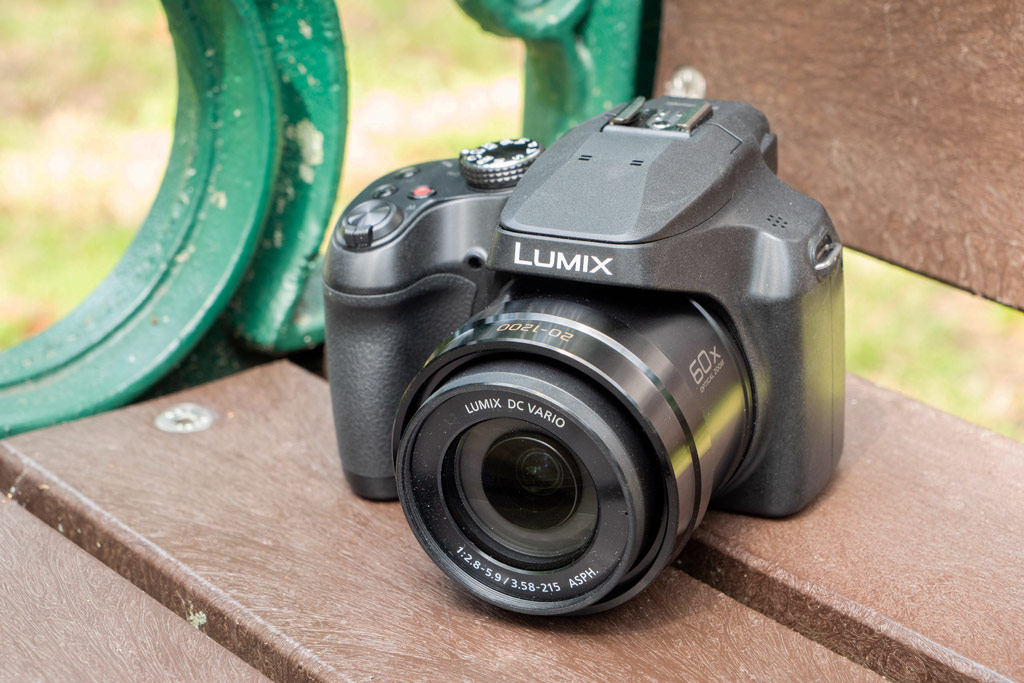
Amateur Photographer verdict
Its huge zoom range will cover almost any subject, from wide cityscapes to close-ups, and it’s highly affordable too – though image quality is good rather than great.- Generous built-in zoom range
- Decent electronic viewfinder
- Very affordable price tag
- Unexceptional image quality
- No Wi-Fi
At a glance:
| Price: | $479 (FZ80D, US) £429 (FZ82D, UK/Europe) |
| Sensor: | 18.1MP 1/2.3-inch MOS |
| Lens: | 20-1200mm equivalent f/2.8-f/5.9 lens (60x optical zoom) |
| Charging: | USB-C in-camera |
| Video: | 4K/30p |
| Screen: | 3-inch 1840k-dot fixed touchscreen |
| Viewfinder: | 0.39-inch OLED LVF 2360k-dots |
| Stabilisation: | Lens-based OIS |
Bridge cameras combine long zoom lenses with SLR-styled handling, in a body that typically costs significantly less than an equivalent setup would cost in an interchangeable-lens system. The Panasonic Lumix FZ80D / FZ82D (the name changes depending on where you are; hereafter I’ll call it the FZ80D for simplicity) is a fairly typical example of the form, sporting a 20-1200mm equivalent f/2.8-f/5.9 lens and an 18MP 1/2.3-inch MOS sensor. At a tempting price of $479 / £429, it’s a solid and inexpensive option for travel.
Image quality from the FZ80D is certainly nothing special – you’re not going to get amazing results from a sensor that small. However, the real selling point of a camera like this is that enormous lens, and it does indeed offer tremendous versatility – you can get useable images of subjects from a tremendous distance, then zoom all the way out to get a wide-environmental shot.
In these days of better-than-ever smartphone quality, I’d only really recommend bridge cameras to those who are really going to make use of those long focal lengths. It’s only at the outer edge of the zoom lens that you’ll get shots substantially better than what your phone could achieve at the same distance. Though on the other hand, the FZ80D is quite a bit cheaper than a modern smartphone.
Read our full Panasonic Lumix FZ80D review

Best DSLR
Best DSLR for travel: Nikon D5600
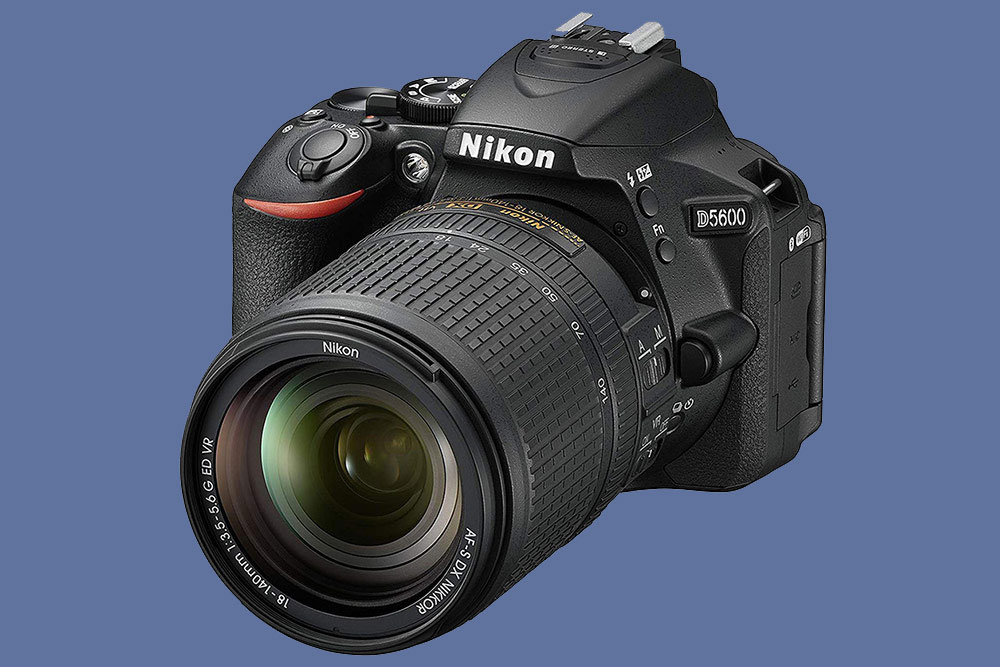
Amateur Photographer verdict
Apart from being a great entry level DSLR the D5600 takes beautiful photos, and you can get a heck of a lot from it if you stick with it and invest in additional lenses- Solid DSLR handling
- Good connectivity features
- Well-priced
- Middling video spec
- Touchscreen cannot be disabled
At a glance:
| Price: | from $600 (used) / £400 |
| Sensor: | 24.2MP APS-C |
| ISO: | 100-25,600 |
| Burst: | 5fps |
| Viewfinder: | Optical pentamirror viewfinder |
| Screen: | 3.2in, 1.4m-dot fully articulated touchscreen |
Some photographers still prefer a traditional DSLR with an optical viewfinder, and Nikon’s D5600 provides a solid specification in a portable package. What’s more, it can be bought in a kit with a versatile 18-140mm kit zoom, offering a 27-210mm equivalent range. There’s icing on the cake too, as Nikon’s SnapBridge connectivity can transfer all your pictures automatically to your smartphone, making sharing your adventures a breeze.
In terms of key features, the Nikon D5600 boasts a reasonably solid specification. Its 24.2MP sensor goes up to ISO 25,600 and supports continuous shooting at 5fps. Autofocus employs a 39-point phase-detection system covering the central region of the frame, while metering is handled by a 2,016-pixel RGB sensor.
One area where the D5600 shows its age, though, is with regards to video recording, which is Full HD only, rather than 4K. Recent mirrorless models undoubtedly offer more, but on the other hand, they can’t match the D5600’s impressive 820-shot battery life – which is particularly useful for travel, where you won’t always have access to a charging point.
In general the D5600 delivers attractive images, with warm, saturated colours and plenty of detail. It handles nicely too, with the responsive touchscreen making up for a relatively simple set of external controls. Those who’d like to add extra lenses are well served by Nikon’s sizeable F-mount range, including the affordable AF-P DX-Nikkor 10-20mm f/4.5-5.6G VR wideangle zoom and the AF-S DX-Nikkor 35mm f/1.8 G. The latter would nicely complement the zoom for low-light shooting. See our guide to the best Nikon F-mount lenses for more ideas.
Read our original review of the Nikon D5600

Best for video
Best travel camera for video: Fujifilm X-S20

Amateur Photographer verdict
The X-S20 is exceptional image quality and advanced video features make it a great chice for stills shooters and vloggers alike- Great image quality
- Advanced AI subject-detection AF system
- Advanced video options
- Excellent battery life
- Pricey
- Small electronic viewfinder and eyecup
At a glance:
| Price: | $1,299 / £1,129 |
| Sensor: | 26.1MP APS-C |
| Burst: | 30fps |
| Video: | 6.2K / 30p |
| Screen: | 1.84m-dot vari-angle touch-screen |
For enthusiast photographers who’d like a small, lightweight camera that handles well and offers excellent image quality, the Fujifilm X-S20 is extremely appealing. Styled to look and work very much like a shrunken DSLR, it offers most of the features of the firm’s flagship the Fujifilm X-T5 in a considerably smaller body.
Based on Fujifilm’s unique 26MP X-Trans CMOS sensor, the X-S20 delivers the firm’s signature attractive JPEG colour rendition. It even has a dedicated dial to select between the various Film Simulation modes, which provide an interesting range of different looks. For example, while putting the X-S20 through its paces in Gozo, Malta, we found that the Astia Film Simulation was great for creating a softer look that complements the historical limestone buildings. Other highlights include 5-axis in-body stabilisation that works with every lens, and a fully articulated screen for shooting at unusual angles.
When it comes to video, 6.2K video recording is available at up to 30 frames per second. The new Vlog mode is designed for recording yourself, as well as giving quick on-screen access to product priority focus, as well as a background defocus mode, face/eye detection, self-timer, IS mode, and high-speed mode.
With its prominent handgrip, twin control dials and joystick for positioning the focus area, the X-S20 provides the kind of handling that should satisfy experienced photographers. Fujifilm also makes the best available range of lenses for the APS-C format, including a nice set of compact primes.
What’s more, the major third-party lens makers have also recently started to support the firm’s X mount, with some interesting optics now available from Samyang, Sigma, and Tamron. This makes the X-S20 a great choice for existing DSLR users looking for a smaller camera.
Read our full review of the Fujifilm X-S20.
Best weather-sealed
Best weather-sealed travel camera: OM System OM-5 II with 12-45mm F4 PRO lens

Amateur Photographer verdict
It’s a travel camera that gets out of your way and lets you shoot and more importantly enjoy photography. The best value weather-sealed camera ever made.- Beautiful Olympus/OM colours straight from camera
- Compact weather-sealed camera and system
- New menus, grip and USB Type-C
- Impressive stabilisation system
- Extensive lens range
- Not optimised for video (see below)
- Sensor, viewfinder, screen remain unchanged
- AF system lacks subject detection
At a glance:
| Price: | $1199 / £1099 body only |
| Sensor: | 20.4MP Four Thirds sensor, with 5-axis IBIS |
| ISO: | 200-6400, (64-25600 extended) |
| Burst: | 30fps electronic shutter, 10fps C-AF, 6fps mech. |
| Video: | 4K 30/25/24p video, Full HD 120p |
| Viewfinder: | 2.36m-dot electronic viewfinder (EVF) |
| Screen: | 3inch, 1.04m-dot vari-angle LCD touchscreen |
Olympus and OM-System cameras are known for offering high performance in a compact form factor, and the OM System OM-5 II delivers on this principle particularly well. It’s one of the smallest mirrorless cameras you can get, while still benefiting from a fully weather-sealed body and an impressive set of external controls. What’s more, you don’t have to spend a huge amount of money to get a matching sealed optic from the biggest lens offering of any brand out there.
With the new CP button (computational photography) on the top plate, you have access to settings that are usually hidden deep in the camera menu. It offers a selection of features especially useful for travel photography: 50MP High-res mode, Live ND (1-4EV, up to ND16), Focus stacking, HDR and multi-exposure right at your fingertips. This not only makes switching between features quicker but also helps you carry less equipment as you travel. The Live ND filter is supported by 5-axis in-body image stabilisation, so you can shoot artfully blurred long exposures of flowing water without the need for a tripod or external ND filters.
It also inherits features from the Olympus OM-D E-M1 Mark III / OM System OM-1, including Starry Sky AF (for astrophotography) and improves on the OM System OM-5‘s low light shooting capabilities with a new “Night Vision” and Live Time and Live Bulb, which allow you to watch long exposures build up in real time on the screen. You can also capture 4K video, along with support for vertical video recording to use for Instagram reels or TikTok.
Its 20MP sensor includes on-chip phase detection that provides 121 focus points spread across the entire image area. You get 30 frames per second with the electronic shutter, a decently large viewfinder, and a fully articulated screen. The camera also produces very attractive JPEG images, with well-judged exposure and white balance that complements the firm’s signature punchy colour reproduction. A truly versatile travel companion that
Read our full review of the OM System OM-5 II
Best full-frame
Best full-frame camera for travel: Nikon Z5 + 24-200mm f/4-6.3 lens
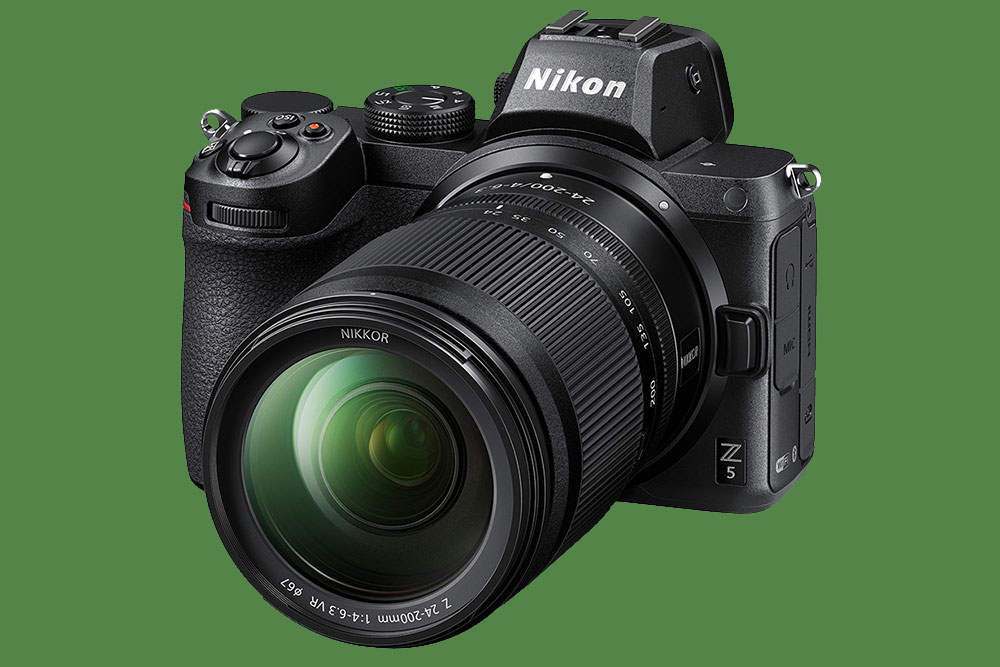
Amateur Photographer verdict
Far more advanced than its “entry level” billing – and still a capable, reliable full-frame camera of quality feel, decent specs, and ever-expanding range of good lenses. Fantastic at its price point.- Satisfying controls and handling
- Does well in low light
- Gorgeous full-frame images
- Pedestrian burst rate
- Vicious crop into 4K video
At a glance:
| Price: | $2,097 / £1,499 |
| Sensor: | 24.3MP full-frame |
| ISO: | 160-51,200 |
| Burst: | 4.5fps |
| Viewfinder: | 3.69m-dot |
| Screen: | 3.2in, 1.04m-dot tilting touchscreen |
If you really can’t do without full frame, mirrorless models are ideal for travel, as they’re smaller and lighter than their DSLR counterparts. It’s also possible to get all-in-one superzoom lenses for them that deliver very creditable results. I’ve chosen the Nikon Z5, as it’s available in a kit with the firm’s Z Nikkor 24-200mm f/4-6.3 VR for a decent discount over buying the two separately.
The lens has a slightly shorter zoom range than its Canon and Sony counterparts, but provides a welcome weight reduction in return, of about 200g. While the Z 5 counts as Nikon’s ‘entry-level’ full-frame mirrorless body, it doesn’t give up a huge amount compared to the more expensive Nikon Z6.
Its 24MP sensor resolves just as much detail in good light, and while it falls behind in terms of noise performance at the highest sensitivities, it’s still perfectly usable at ISO 12,800. However, its maximum shooting speed of 4.5fps looks rather pedestrian by today’s standards, meaning it’s not the best choice for fast action or wildlife. It’s also only able to record 4K video with a significant 1.7x crop.
In other respects, though, the Z5 maintains most of what makes Nikon’s mirrorless cameras so attractive. The body may be small, but it has plenty of external controls, along with a lovely large viewfinder and a tilting touchscreen. Dual SD card slots offer the option of backing up your images for peace of mind, while in-body IS means you can often do without a tripod. A range of fine fast primes is also available for low-light shooting.
Read our original review of the Nikon Z5 here
How to choose the best camera for travel
So what features might be most desirable for a travel camera? Small size and light weight are a given, and we’ve assumed that most users will prefer using a zoom lens, quite probably with an extended range. This could be complemented by a couple of small primes, for shooting in low light or going out in the evening. It might also make sense to add an ultra-wideangle zoom for architecture, landscapes or interiors.
As such, where we’ve picked an interchangeable lens camera, we’ve also provided a lens recommendation, generally one that you can buy bundled with the camera. The fixed-lens compact cameras we’ve picked generally have generous zoom ranges, with the exception of the Fujifilm X100VI, which is loved by travelling street photographers for its super-sharp 35mm prime. This is one we’d recommend for city breaks rather than countryside hikes.
In general, the cameras we’ve chosen in this guide also include fully manual control, a built-in viewfinder and raw format image recording. In order to attain a certain level of image quality, most also use sensors of the 1-inch type or larger. The exceptions being the Olympus Tough TG-7, and Panasonic Lumix TZ99/ZS99, which we have chosen for what they offer in such a small package.
Why should you take a travel camera with you?
A good travel camera will offer you much more shooting versatility than simply relying on your smartphone. The majority of cameras have larger and higher quality sensors than phones, meaning they produce cleaner and sharper images, particularly in low light, that will stand up better to cropping and printing.
Many travel cameras also allow you to use powerful optical zoom lenses, whether through having one attached or via an interchangeable lens mount – and this is one area in which smartphones still lag well behind. When you shoot every image on your phone, they tend to come out looking more or less than same, with a similar perspective. A dedicated camera with a powerful lens will give you much greater versatility.
Some travel cameras are also quite specialised in certain areas – e.g. they boast extensive waterproofing that allows them to be submerged for extended periods. You also may not want to be solely reliant on your phone’s battery and memory when out and about on your travels.
What is best to take travelling: a phone, a camera or a GoPro?
There’s no single answer to this – it depends on where you’re travelling and what you like to shoot.
A phone is best if you’re travelling light and want something pocketable. If you’re not too interested in photographic composition and just want something to snap photos of your meals and maybe and capture a cheeky selfie on top of the Eiffel Tower, having your phone in your pocket will accomplish all that.
A dedicated camera will significantly improve your image quality, particularly in low light or at distance, and is the best choice if you are serious about improving your travel photography. A camera is also the right choice if you plan to print photos after your trip, as the quality from a larger sensor will hold up a lot better.
A GoPro, or similar action camera, is quite a specialised tool. It’s great for capturing POV footage, particularly of daredevil stunts and extreme sports like windsurfing, mountain biking or rock climbing. However, the ergonomics and strengths of a GoPro mean it’s much less suited to being your camera for day-to-day travel photography – it’s just not really made for it.
How we test travel cameras
We test travel cameras from the perspective of real-world photography and video performance. That means we take them out on the road – using them in a wide range of everyday travel situations – to see how well they help you blend in, move easily, and shoot intuitively. A great travel camera should be versatile enough to handle landscapes, portraits, and video with confidence.
We explore every shooting mode a camera offers, assessing not only image and video performance but also how easy it is to use while travelling – whether that’s around your local city, countryside, or abroad. We test cameras in diverse lighting, including low-light environments where many models can struggle. We evaluate how each camera performs in genuine travel scenarios. For example, we’ve tested cameras like the Fujifilm X-E5 on the sun-drenched streets of Valencia, as well as along the more temperate docks of London – capturing a variety of scenes and lighting conditions.
We also assess specialist modes such as portrait and AI-assisted shooting, while paying attention to practical aspects like battery life, screen quality, and overall build. We then take all these factors into account, along with such things as portability and lens systems, when giving our final conclusion and score. You’ll find the full breakdown of how each camera has performed in our full reviews.
Recent updates
- October 2025: Prices updated. The Olympus OM-5 has been replaced with the OM System OM-5 Mark II as the best weather-sealed travel camera since it offers more features. How we test travel cameras section has been updated and expanded to add clarity and additional information.
- September 2025: Prices updated. Ricoh GR IV has been added as the best travel compact with an ND filter.
- August 2025: Fujifilm X-E5 added as best travel camera overall.
Take a look at our latest buying guides for more great options.
Related content:
- The DSLR is dead, long live the compact
- Flying with camera kit: how to do it
- Do travel photography like a street photographer
- How to take great travel photos with a smartphone

